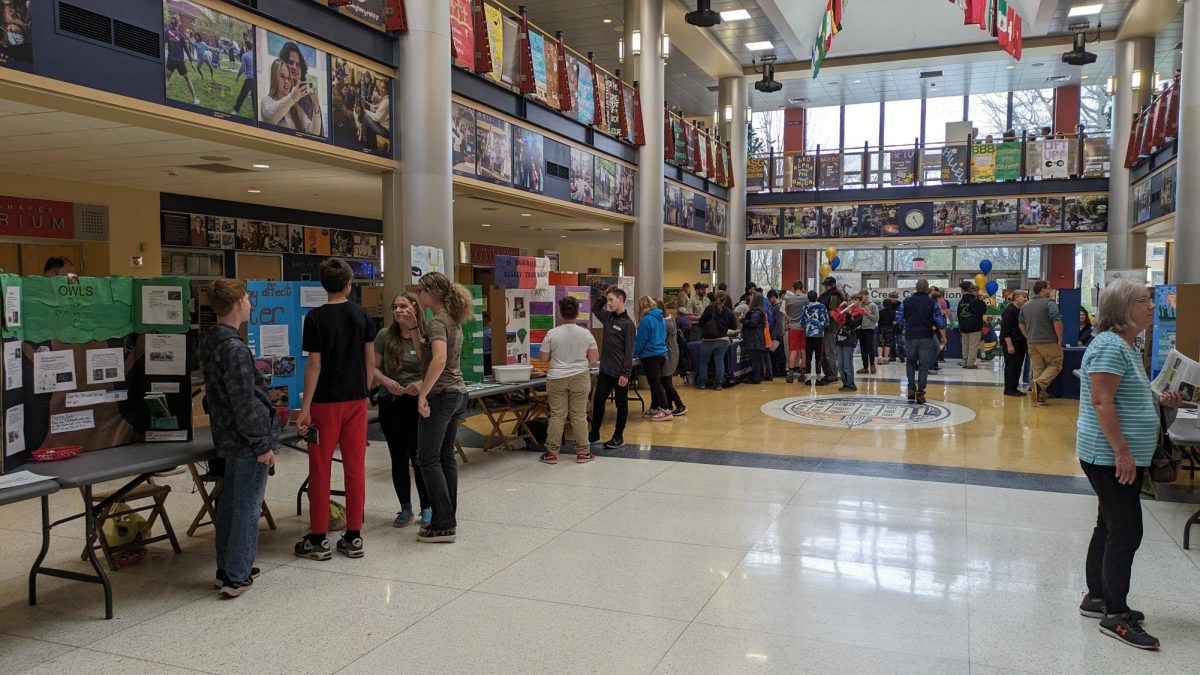Dozens of prospective students routinely filter through Meadville on their way to Allegheny, passing landmarks that aesthetically define the town.
Bordering the perimeter of PennDOT’s parking lot are sign sculptures, the only flowers that don’t wilt in Meadville. The famous “Read Between the Signs” fence visually prepares visitors for what’s in store downtown.
Now, prospies will recognize their arrival in town by I–79’s makeover. Much of Meadville’s resourceful beautification can be attributed to the hard work of CEED, the Center for Economic and Environmental Development.
About two years ago, PennDOT began construction on the south side of the I–79 bridge after collaborative planning with CEED. Last summer, Director of CEED and Professor of Art Amara Geffen worked with student interns to continue the project on the north side. The result is a new storm water filtration system that will, hopefully, resonate nationally.
I–79’s new system is extremely innovative, a stark difference from the previous one. Federal highway laws dictate that a system known as “sheet–flow” needs to be used. Geffen explains the faultiness of I–79’s former sheet–flow system.
“Sheet–flow means all that water rushes off the bridge and spills into the infield and just infiltrates,” Geffen said. However, in the case of I–79, water would rush too fast over the land, preventing any kind of filtration.
Consequently, the dirty storm water from the bridge would be emptied into Van Horn Creek. This was problematic because, according to Geffen, the water was contaminated with salts, heavy metals and chemicals that might fall off trucks.
“It was all going right into our water system,” Geffen explained.
With the new design on I–79, a series of basins collect water, serving as check–dams for water to filter through, so any water entering our water system is now cleaner.
“You’re retaining that water so it has time to percolate as opposed to sheet flowing and rushing into that stream,” Geffen said.
Water from the bridge is now recycled by use of pipes, where CEED’s artistry came into play last summer. Now drivers have the aesthetic pleasure of seeing colorful pipes and mounds blanketed in plants (or snow) while cruising down I–79. This project won the Diamond Honor Award presented by the American Council of Engineering Companies and may advance to a national round of awards from the council.
While CEED’s other projects haven’t been recognized with the same degree of eminence, they are still laudable. Both the flower sculptures and the Read Between the Signs fence demonstrate the level of resourcefulness the community can achieve. Emma Cook, ’12, works as a Davies Community Service Leader at the CEED site. Last summer she worked on 4’ by 5’ models of Shadybrook Park as part of CEED’s redevelopment plans while also painting two murals on the sides of outhouses with other students.
“The projects that CEED is working on exemplify the power of liberal arts–based work, which recognizes the intertwined nature of the economy, the environment, the arts, and social change,” Cook said.
Students are definitely aware of the presence of these projects, but they are not so familiar with their source.
“Unfortunately I didn’t know that those were CEED projects,” said Matt Carrai, ’10. “It’s great to see the student body and faculty taking initiative in environmental causes.”
So while both prospective and current students might not know much about CEED’s projects, they may be on the road to recognizing that they are, in Geffen’s words, “really cutting-edge work.”




